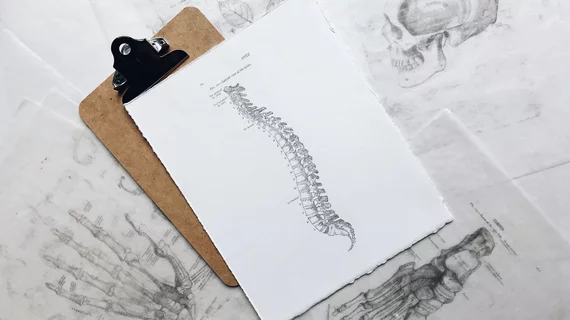Disproportionate CT use for minor injuries is pushing emergency spine imaging utilization skyward
The increasing use of CT for patients with minor injuries is driving up cervical spine imaging utilization across emergency departments, according to new data.
Spine imaging exams have tripled in some populations over the past few years, and more than 800,000 of the 40 million annual emergency department visits in the U.S. now involve spine injuries.
Looking over nearly a decades’ worth of such encounters, cervical spine imaging has ballooned across all types of injuries. But utilization for minor traumas is at the heart of the problem, radiologists with Emory University School of Medicine and Massachusetts General Hospital reported Aug. 2 in JACR.
This is the first study to use claim-based injury severity score (ISS) metrics to study imaging utilization, according to the researchers, and the findings offer unique insight into what may be a growing problem.
“Although ISS is typically used as a tool for research and quality improvement and is not available in real time, we believe our observations could nonetheless inform ongoing efforts (eg, Choosing Wisely initiatives, decision support tools, pre-authorization processes, and consensus statements for optimizing ED imaging) to ensure the most appropriate use of cervical spine imaging in the acute setting,” Akram Khaja, MD, of Emory’s Department of Radiology and Imaging Sciences, and co-authors added.
The group used ED trauma encounters recorded in a national commercial database between 2009-2018 for their findings. Visits included diagnosis codes, and injuries were classified as minor, intermediate or major via the ISS algorithm.
Overall, cervical spine imaging jumped 5.7% annually across the more than 11 million ED visits for trauma. That rise coincided with a 10.5% annual increase in CT scans and a 2.7% annual drop in radiography, the authors found.
Increases in computed tomography utilization were greatest for minor injuries, with smaller jumps for other types of trauma. Radiography stayed stagnant for minor injuries, meanwhile, and dropped across intermediate and major visits.
Finally, a whopping 68% of ED visits involved minor injuries, with 3.5 million (31%) recorded as intermediate and 68,000 (0.6%) major.
There have been many recent pushes to reel in the use of low-value imaging but future efforts may need to zero in on CT, the authors warned.
“Our work suggests that an increased focus on CT imaging may be warranted in similar future initiatives,” Khaja et al. concluded. “Given that the 2014 Protecting Access to Medicare Act will eventually mandate the use of clinical decision support tools for Medicare beneficiaries in the ED setting, our work suggests that such tools could be especially impactful for patients presenting with minor injuries—by far the most frequent trauma-associated ED encounter involving cervical spine imaging.”

